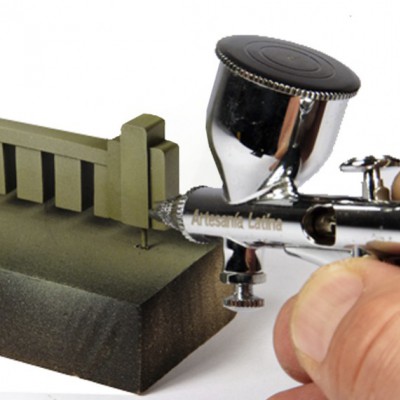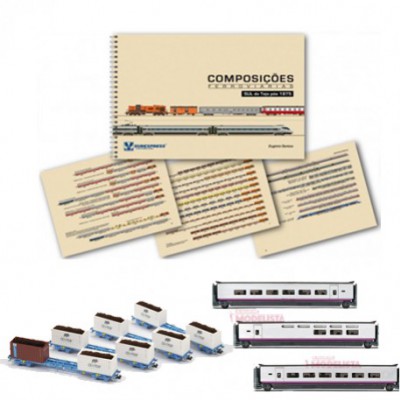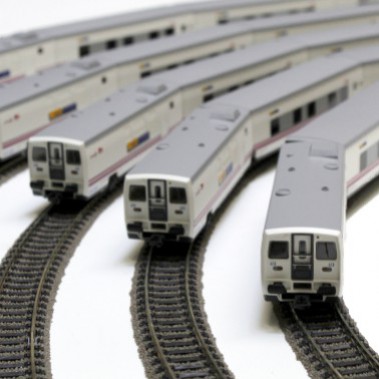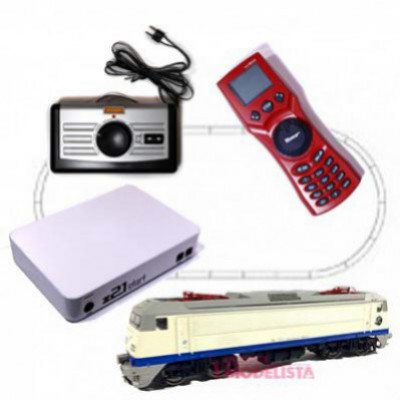In many occasions we have problems when we want to represent vegetation in our models, dioramas or railway circuits.
This is a quick tutorial to be able to make some kind of vegetation in an easy and cheap way. In this case, it is a small tree.
MATERIALS:
1. Woodland Scenics Set REF:S30 dead fall. Very useful when we want to choose weird shaped branches.
2. Small branches chosen from the set described before.
3 y 4. In Noch catalogue, we can find very complete sets to represent small leaves in spring or fall colors. Refs: 07167 and 07168 are perfect for this purpose.
5. Superfine Epoxy Putty. Perfect to be able to mold the trunk texture.
6. Small plant branches, taken from our garden. These ones are from a brand named PKS, unfortunately disappeared some years ago.

CONSTRUCTION OF THE TRUNK:
7. Needed materials to be able to assemble the different sections of the trunk.
8. Unassembling a metal clip, we cut 2 cm sections with the help of some pliers.
9. Picture where we can see the metal section needed.
10. We practice some drills with a 1mm drill in the parts where the different sections of the small branches, previously selected, will be attached.
11. Applying adhesive, we put the previously cut bolts.
12. Small branches wich we will use as chimas. We will put them strategically following a pattern similar to the one that we find in the nature. We will never put them symmetric, because if we stare a tree, they never have a standard growing pattern.
13-14-15. Pictures where we can see the tree with its branches, after the full process described before.

TEXTURE OF THE TRUNK:
16. Milliput Putty, is a two component epoxy putty used to bring rough texture to the trunk. We can use any puttyn of this type ( Magig Sculp, Tamiya, etc).
17. Small putty ball, already mixed. One of the tips to know if the mixture is well done and homogeneous, is the resulting color, which has to be uniform.
18. e apply small amounts on the trunk of our tree.
19. With the help of a small spatula, we distribute the putty uniformly
20. 1-2-3. We can do the texture taking a look to a tree which interestes us (a walk through the park could be great for ideas).
21. We scratch a small heart on our trunk with an awl (these details give our models personality).

PRIMER:
It is convenient to set the work done before, overall when we are using organic materials as the wood used to make the trunk.
22. The primer which we are going to use. Tamiya manufacturates a matt finish spray very proper to fix the paint later.
23. Trunk and branches from our tree before we apply the primer.
24, 25, 26. Primer on the piece, dry. We cn see how the textures which we worked on before are now visible.

PAINT :
27. The colors used on the trunk.
28. With Vallejo black primer paint, we put a base layer to the full piece, trunk and branches.
29-30. We paint the trunk using the fresco painting technic. This technic is about mixing the colors when they are still wet, giving us as result a full detailed surface with many tones and colors, exactly the same than in the nature.

31. Color filters used to create more tone variety on our tree. We use them as the washes, mixing the tones.
32-33. We can see the subtle tones on our tree.
34. Detail of the heart scratched before and painted. We can see how it becomes part of the tree perfectly.
35. We apply lichens (moss-green crushed foam). Through the deepest parts of the trunk.

FOLIAGE:
36. Water based adhesive, perfect to paste the foliage on our tree.
37. Teloxy branches from the brand Heki, Ref:1630. used as base to create the foliage. The advantaje from this reference is that tey come in green colors, which saves us to paint them.
38. Noch 07167 reference which we will use to create that feeling of leaves on our branches.
39. We spray the previously described glue (36) with a water atomizer and sprinkle the different types of leaves on the Teloxys branch. These remain attached to it, resulting in a branch with very realistic leaves as we see in the picture.
We work in small groups of branches, giving it volume bit by bit.

FINAL PICTURES:
40-41-42. Pictures where you can see the work described before.
43-44. Le podemos añadir ciertos toques para hacer cada árbol que realicemos mas personal , marcas de humedad , hongos y un largo etc.. We can add some touches to make every tree personal, as wet marks, mushrooms, and a very long etc.

We hope that you have enjoyed reading this post, as we have enjoyed making this small tree.
Long and happy life to the modelling.
. DAGUERRE .



















